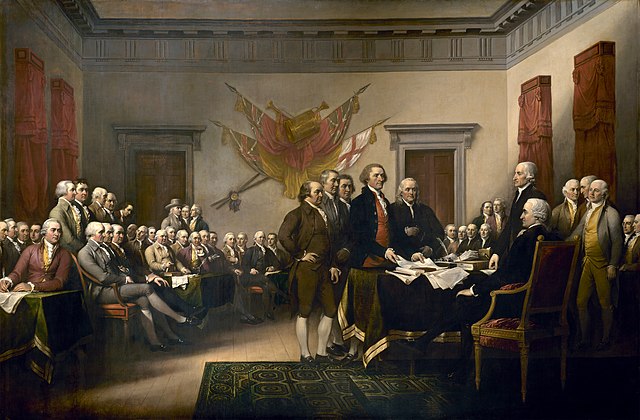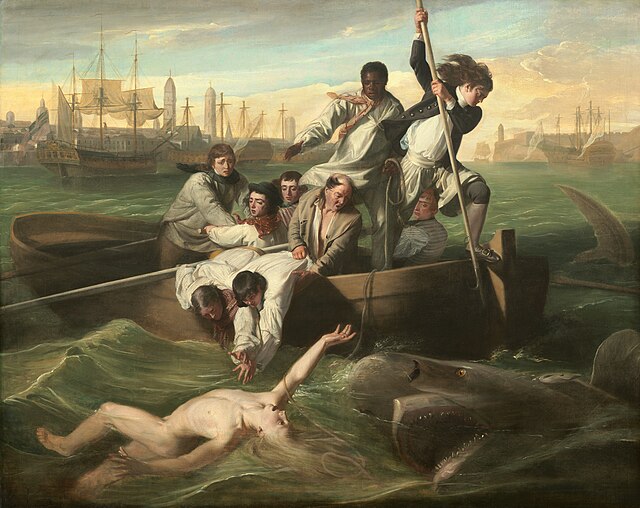Visual art of the United States
Visual art of the United States or American art is visual art made in the United States or by U.S. artists. Before colonization, there were many flourishing traditions of Native American art, and where the Spanish colonized Spanish Colonial architecture and the accompanying styles in other media were quickly in place. Early colonial art on the East Coast initially relied on artists from Europe, with John White the earliest example. In the late 18th and early 19th centuries, artists primarily painted portraits, and some landscapes in a style based mainly on English painting. Furniture-makers imitating English styles and similar craftsmen were also established in the major cities, but in the English colonies, locally made pottery remained resolutely utilitarian until the 19th century, with fancy products imported.
Gilbert Stuart, George Washington, also known as The Athenaeum and The Unfinished Portrait, 1796, Museum of Fine Arts, Boston, is his most celebrated and famous work.
John White, Roanoke Indians, 1585, watercolor, British Museum
John Trumbull, The Declaration of Independence (event 1776, painted 1819), United States Capitol rotunda, Washington, D.C.
John Singleton Copley, Watson and the Shark, (original version), 1778, National Gallery of Art, Washington, D.C.
The 1913 Armory Show, also known as the International Exhibition of Modern Art, was organized by the Association of American Painters and Sculptors. It was the first large exhibition of modern art in America, as well as one of the many exhibitions that have been held in the vast spaces of U.S. National Guard armories.
Armory show button, 1913
Armory Show poster
A drawing by John French Sloan titled "A slight attack of third dimentia brought on by excessive study of the much-talked of cubist pictures in the International Exhibition at New York", April 1913
69th Regiment Armory in 2008








